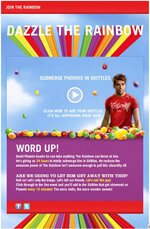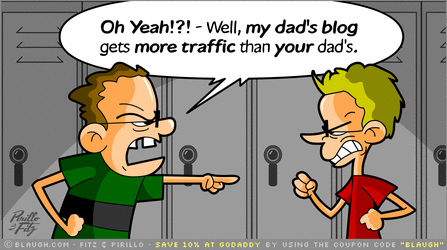By Amy Kean, IAB,
Thank heavens for the research release today, from YouTube, which confirms a sneaking suspicion that I – and the IAB Social Media Council – have had for a while. If a brand enters social media… they should tell the world why they’re there in the first place.
That’s obvious, you might say. Simple common sense, some may tweet. Absolutely – I don’t think anyone actually ever claimed that social media was a form of rocket science – but it still doesn’t happen that often. And that’s because there exists an assumption that hasn’t yet been disproved (until today) that just entering into a conversation is enough, that a ‘like’ or retweet is unequivocally fabulous, and that blogger coverage, without a rationale for why you’ve received it, is sufficient.
This research from YouTube (supported by the IAB) highlights the real need for harder messaging in social media content and advertising, showing that a really quite remarkable 60% of people are not yet existing customers of brands they share or ‘like’. They just like them. Now I’m no Rain Man, but that’s a big number. Read more…
By Tom Gray, Imagination
 Astronaut Douglas H. Wheelock has just become the first person to check in to Foursquare from space, earning himself the NASA Explorer badge and, apparently “A free scoop of Astronaut icecream” Not sure whether the reward really justifies the expense, but well done to him anyway…
Astronaut Douglas H. Wheelock has just become the first person to check in to Foursquare from space, earning himself the NASA Explorer badge and, apparently “A free scoop of Astronaut icecream” Not sure whether the reward really justifies the expense, but well done to him anyway…
Wheelock is not the first to score an extreme badge – in April this year 15-year-old Parker Liautaud became the first person to check in at the North Pole, earning himself the Last Degree badge, and the following message “Congrats on making it to the North Pole! Take a deep breath, plant your flag and be sure to get home safe!” Read more…
By Shona Gosh, Social Media Analyst RMM
 Many established companies learn the hard way that venturing into social media means relinquishing the concept of carefully controlled branding. Once you’re in the social space, your branding and products become fair game to public perception (and evisceration, on occasion).
Many established companies learn the hard way that venturing into social media means relinquishing the concept of carefully controlled branding. Once you’re in the social space, your branding and products become fair game to public perception (and evisceration, on occasion).
You have to hand it to Skittles UK. They’re obviously happy to market Skittles in a way which plays to alternative Skittle uses (projectile ammo) rather than a carefully controlled message (these sweets are yum). Few large-scale companies would be willing to embrace alternative product perceptions – let alone take it to the next level.
The campaign saw Skittles UK take on ‘Dave Phoenix’, who challenged them to completely submerge him in Skittles in 24 hours. The playful campaign was well-pitched, shamelessly stealing the ‘macho guy’ theme from Old Spice, livestreaming the carnage and providing excellent build-up and post-event content.
As PR stunts go, it was perfectly executed – and Skittles should be applauded for some creative brilliance.
Perhaps a more interesting question is whether Dazzle the Rainbow was genuinely social. Metrics such as live stream viewing figures and shares are not yet available. But YouTube viewing figures, comment numbers and ‘like’ numbers suggest that Skittles did not leverage a large proportion of their 1.3 million existing fans. We can all agree that it was a great PR stunt. But while shiny PR-able ideas are fun, true social media savvy comes from genuine community initiatives.
How could this have been more community-focused? While Skittles-throwers were encouraged to click a Facebook ‘Share’ button, there was little social impetus to do so. Once you had thrown your Skittles there was, for example, no social scoreboard mechanic comparing your Skittles score against friends. For all you knew, you were a lone Skittles consumer throwing sweets at another Skittles consumer. Rather than encouraging group activity, Dazzle the Rainbow encouraged the activity of many individuals. It may seem like a fine line, but it’s the difference between an online PR campaign and a truly social one.
By Amy Kean, head of the IAB social media council. .
Last week, I was lucky enough to be a part of a fantastic IAB event, entitled ‘Is Digital the Future of Brand-Building? ‘ With one of the best line-ups I think I’ve seen at one of these shindigs, we had Bird’s Eye, Diesel, the Mail Online, O2, the University of Bournemouth and our event partners, Skive, all proclaiming their undying love for online and mobile.
At the IAB we refuse to believe that digital will ever actually replace other media as the ‘ultimate brand-builder’ - it has its strengths and weaknesses like any other channel, but the overwhelming conclusion was that hype aside, the medium will definitely sit at the heart of brand communications. And in reality, this is something about which marketers have little choice.
But what about social? The future of social media is a slightly less straightforward debate – arguably it’s so young, and evolving at such a pace, that it’s hard to predict what consumers (and brands) will be responding to in 6 months, let alone 2, 5 or even 10 years.
Skive’s provided a fascinating and valid perspective on this at our event last week: will we even need to refer to ’social media’ in the future? (It’s already being described as an unhelpful term…) In fact, it’s likely that most marketing will, in time, become inherently social, and we can stop talking about the discipline like it’s a separate, magical, dark and mysterious art that only a precious few practitioners can understand…
The below is Tom’s fantastic set of slides, with some great, unique examples – well worth a look.
by , Tamar
There have been several ’stories’ in the past week or so which seem to highlight a worrying trend amongst ‘offline’ folk – that is, that bloggers are not worthy of the same respect as other forms of journalist or marketer.
Andrew Marr is probably the most vocal example, speaking at the Cheltenham Literary Festival this week. As reported by the Guardian, Marr apparently described blogging as:
“…so-called citizen journalism is the spewings and rantings of very drunk people late at night”
He went one step further, deciding that bloggers (presumably such a small group of people that they can be lumped in one single demographic) are not the sort of people he wants to be dealing with:
“A lot of bloggers seem to be socially inadequate, pimpled, single, slightly seedy, bald, cauliflower-nosed young men sitting in their mother’s basements and ranting. They are very angry people”

Thankfully, several other equally-prominent media folk have jumped to the defence of the bloggers in question – my favourite was Channel 4’s Krishnan Guru-Murthy, also writing in the Guardian:
“They might not be household names, or worthy of a slot on Radio 4, but to dismiss them out of hand seems wrong. As for bloggers being “inadequate, pimpled and single”, that’s no way to talk about Jon Snow. He isn’t single.”
Krishnan makes several very strong points in his reply (with very good humour, to boot) – but the point above really cristalises it for me. Bloggers might not be household names – though I’m sure if you surveyed a lot of households these days you’d be surprised by the result – but they are just as entitled to an opinion as every other commentator.
Worse still, to dismiss them as being not-worth-listening to simply because of the medium they choose to write on is just plain stupid. As a Marketeer, I regularly work with bloggers whose blogs get readerships of well over 100,000 unique users, some of whom none of you reading this will have heard of. But a journalist from the Financial Times – a newspaper with a readership of a little over 400,000 at last count – will be treated with respect and reverence by the journalism community. That doesn’t seem right to me.
More recently (today in fact) Twitter was abuzz with the story of Muireann Carey-Campbell, a blogger who had a nasty run in with a PR agency and a very large phone company. I won’t rehash the story here, as it’s been reported in numerous different places already today. Needless to say, it’s another example of a blogger being treated with much less respect than their more traditional peers. Despite the fact that both ‘guilty’ parties have since apologised, it’s such a shame that these situations only ever seem to get resolved when bloggers make a song-and-dance about it.
I can’t say I’m too surprised that old-media folk are on the defensive when it comes to bloggers – with pay-walls and over-hyped iPad applications supposedly forming the future of ‘real’ journalism, the winds of change are clearly blowing hard. As grown-ups and professional marketeers, it’s up to us to help bloggers prove their clout and show how influential they really are. Considering most of us are bloggers in both our spare and work time time too, I’d say the gloves are firmly off on this one…
by , Torchbox ()
The first ‘Facebook for Good’ conference was held yesterday in London, bringing together charities for a wide range of presentations and discussions about how to use Facebook to its fullest potential.
The event was kick started by a keynote speech from Randi Zuckerberg, Head of Consumer Marketing at Facebook.
What I liked about Randi’s speech was that she gave 10 tips that she believes will deliver winning Facebook pages. For some readers, it may seem like relatively common sense style info. However, that doesn’t mean to say everyone is practising what Randi preached so I thought I’d share the tips (they appear within the speech marks) along with my feelings on each as they’re relevant to all organisations not just the charitable sector. Seconds out tip one:
1. ‘Create a public page not a group.’ This is because there are lots of benefits with pages – for example you can get a personalised url, you get option of multiple logins, the posts come from the title of your page rather than an individual, you get access to the Insights data.
2. ‘Customize your Facebook page’ make it represent what your brand is all about. I think this is an interesting one as I reckon some people like entering on the wall and seeing what the page is all about before deciding whether to like. However, there is no reason why tabs can’t be used to deliver content that reflects a brand’s personality. I liked the example given by of iPlatform later in the day (who also runs the ) of the FA’s Support England tab which allowed you to put your name on the back of a virtual England shirt in run up to the World Cup. England may have faIled at the World Cup – but that was a winning campaign.
3. ‘Come up with rules of engagement’ – I guess this covers a wide range of stuff from deciding and stating what’s allowed and what isn’t, to figuring out the best time to post, to whether you’ll be using photos / vIdeo. In short, have a plan. It was interesting to hear that M&S have a meeting to discuss this week’s and next week’s wall updates. Like an editorial team in a newspaper.
4. ‘Encourage community interaction’ – if you can you might just turn from a page that people like to one that people love! I love the way Cobra uses Facebook to lead . Just the thought makes me yearn for a madras, garlic naan and bottle of Cobra – but enough of that. Tip five awaits…
5. ‘Be authentic’- my take on this is don’t try and be something you’re not. Use a tone of voice and imagery that befits the organisations you’re representing. And be polite and don’t say something you wouldn’t say in a public space.
6. ‘Get immediate feedback’ – if you have a community who are engaged, they’re defo going to want to be involved. So if you have a question you’d like feedback on, the community can be a great resource to make that happen.
7. ‘Leverage the power of video’ – I’m with Randi on this one. A little while ago I started up a for fun in my spare time and the most successful feature has been Ask A Silly Question, video interviews with community members asking stuff like ‘if you could be a comic book hero for the day who would you be and why?’ recorded and uploaded from an iPhone. Around 80% of the people that like the page watched the first video!
8. ‘Get creative!’ – effective creativity will result in compelling content that spreads. And if you’re an early adopter, the content can drive a news agenda. The one I’m pondering right now is how to use Facebook Places. Seems other folk are too, take James Blunt’s record label and how they’ve used Facebook Places to reward check ins with free downloads.
9. ‘Make it go viral!’ – tagging can help a post go viral and there’s been few better uses of tagging than ‘the most tagged photo ever at Glastonbury‘ which was highlighted. My view is that it is a combination of compelling content and effective amplification (i.e creativity and hard graft) that results in something going viral.
10. ‘Use insights to guide decisions’ – hear hear Randi. Not everyone uses the free Insights data that Facebook makes available but everybody should because the lessons you learn can help improve the way your campaigns perform. And that’s got to be a good thing…
So there you have it, Randi’s top ten tips! If you’d like to keep in touch about future Facebook for Good events, my tiny tip is head over to the page. If you want more info on best practice with your Facebook page there’s load of info here: .

Back in July the IAB released it’s Social Media Measurement framework. This framework sparked a number of conversations about different approaches to measurement and best the ways to implement such a framework.
The framework itself has been a great resource for marketers to lay-down measurement foundations; however, overtime, depending on your campaigns, there may well be a need to use more advanced metrics for more specific and granular evaluation of campaigns.
Market Sentinel have been working on number of research and measurement metrics to help the more advanced marketeers or community managers. Some recent work includes:
- The assesment of response metrics
- Understanding the context of product demand through social meda
- Determining the sociability of topics
- Planning Research Metrics
pic via janGlas
By head of the social media council, IAB
You may have noticed, but here at the IAB we get excited about a lot of things.
But nothing gets us hot under the digital collar like the biannual IAB UK online adspend results, which hit the headlines today. Every six months, in partnership with PwC, we measure the size of the UK market to help marketers understand the true scale of the medium and to provide the digital industry with the ammunition it needs to make the case for even bigger budgets.
And what IS the headline? Well, we hit a really-quite-perfect 10% in terms of year-on-year growth, with every format within online (search, display and classifieds) seeing an increase in advertising investment. The medium hit almost £2 billion in just six months, with an impressive 24.3% market share. Good news all round.
You can read the official story on the IAB site, but what readers of this blog might be interested in is where ‘social’ fits within this online success story.
Just to be clear, the figures set out in the IAB/PwC study refer to advertising expenditure online, so no production or agency costs are included… this means that a lot of social spending – i.e. money spent on creative, budgets dedicated blogger outreach programmes, social media monitoring costs and so on – doesn’t feature amongst the results. That figure, I would imagine, is pretty damn big on its own.
But what we can measure in this study is the advertising that lives on social networks, blogs, forums, online communities and so on, and this is now a whopping 13% of all online display (all online display was worth £334.6 million in H1 2010, so you do the math!) Last year we estimated social to account for around 10% of all online display, and if you cast your minds back just a few years ago… well, it was barely on the adspend radar. Read more…






